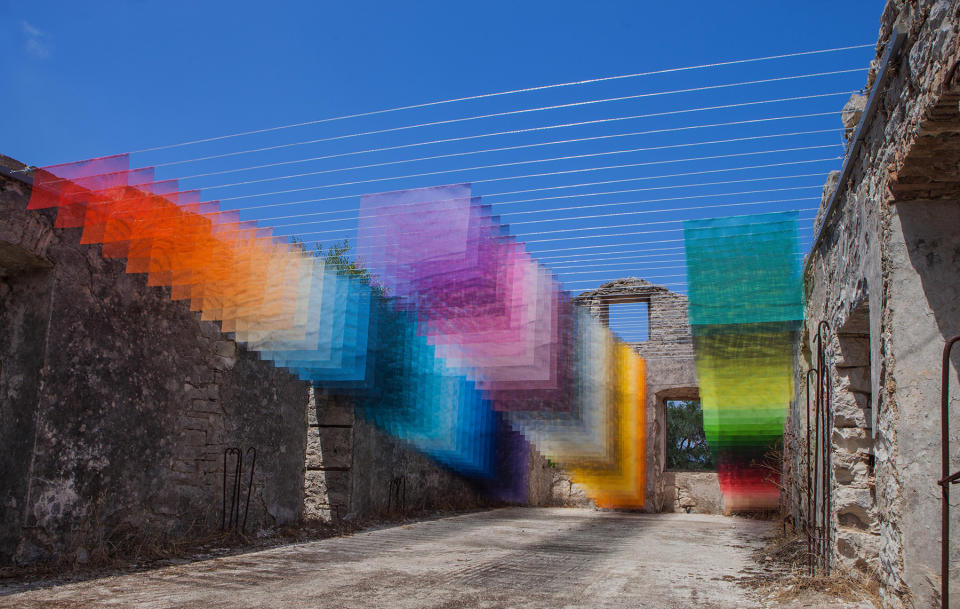A real-life 8-bit installation pixelates a Greek ruin
Ideally, an artwork makes you question the world and looks beautiful doing it. A new installation from German artists Thomas Granseuer and Tomislav Topic, aka Quintessenz, does all that. Located on the Greek island of Paxos as part of the Paxos Contemporary Art Project, Kagkatikas Secret is made of spray-painted textiles hung in a 400 year-old Greek ruin. The trippy, pixelated effect will make you wonder if the matrix is glitching, while the beautiful design and gradient colors helped it go viral instantly.
The installation borrows from previous Quintessenz pieces Paradis Perdus in the south of France and Flickering Lights at Berlin's Panorama Fashion Week. Gransaur and Topic's work is inspired by graffiti art and chromatics, among other sources, and their overarching aim is to produce art that "makes/creates space for its color," according to their website.
The piece uses over 120 shades of color, and the panels get larger as you walk toward the end of the ruin, called "Old Stone House" in the town of Kagkatika. As they're also transparent, you can see through the panels to get a sense of the entire piece, which certainly pops against the gray-colored ruin. At the same time, it looks different depending on your angle of view, and is particularly weird if you view it through one of the windows.
Quintessenz's work is being exhibited along with work from seven other artists displayed in multiple mediums and locations around Paxos. The aim is to "highlight the spirit of the island and support the work of young artists," according to the curators.
The work might make you think about the place of digital art in an analog world, but when viewed in person, there's a kinetic component from the wind that you don't get from the photos (see the video, above). If you should be lucky enough to visit it in person, the artists don't just want you to Instagram it and leave. Rather, "we hope that the visitors of our work leave their mobile phone cameras in their pockets for a moment and simply enjoy the light and the translation of the wind in the material," they explain.


